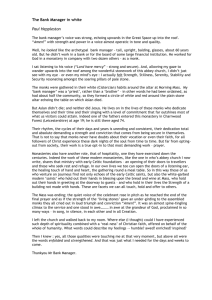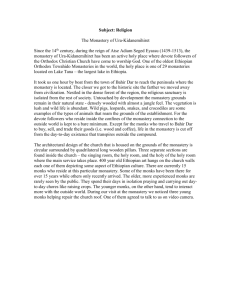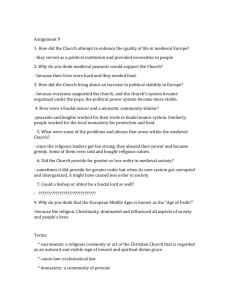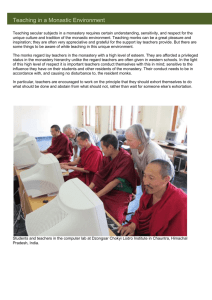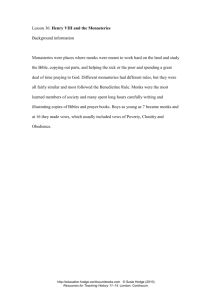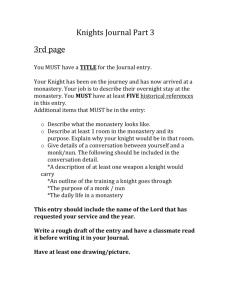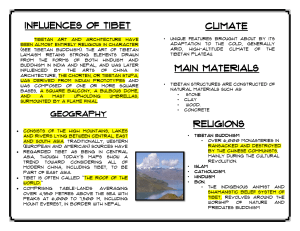January 18 – Introductory Why Care lecture - Emory
advertisement
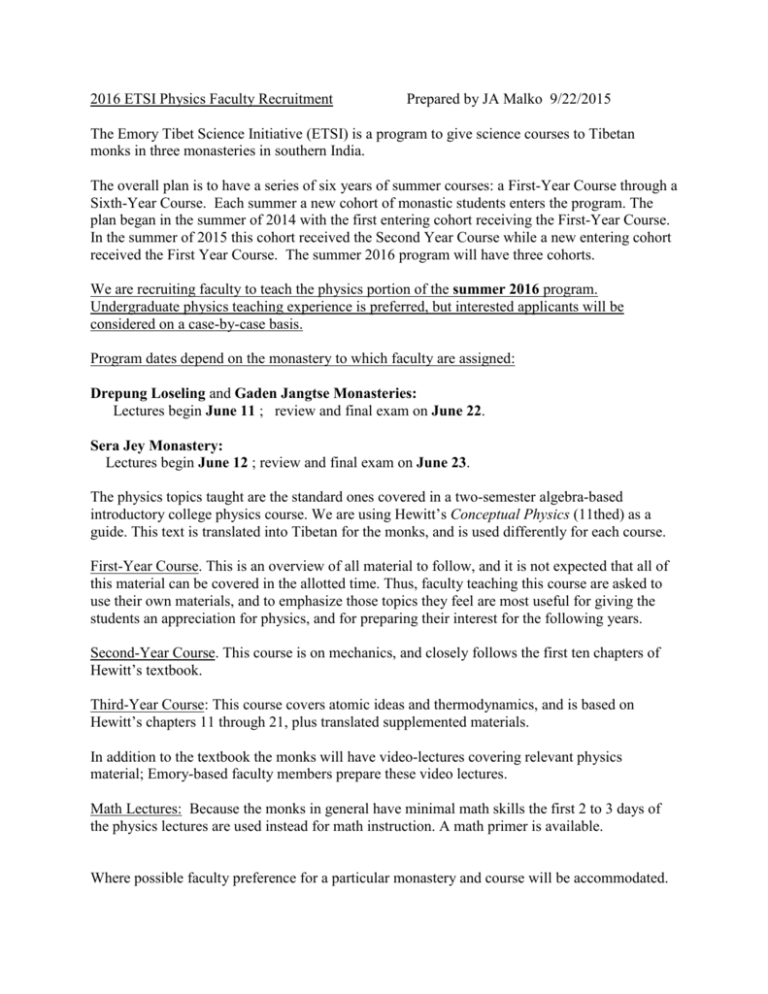
2016 ETSI Physics Faculty Recruitment Prepared by JA Malko 9/22/2015 The Emory Tibet Science Initiative (ETSI) is a program to give science courses to Tibetan monks in three monasteries in southern India. The overall plan is to have a series of six years of summer courses: a First-Year Course through a Sixth-Year Course. Each summer a new cohort of monastic students enters the program. The plan began in the summer of 2014 with the first entering cohort receiving the First-Year Course. In the summer of 2015 this cohort received the Second Year Course while a new entering cohort received the First Year Course. The summer 2016 program will have three cohorts. We are recruiting faculty to teach the physics portion of the summer 2016 program. Undergraduate physics teaching experience is preferred, but interested applicants will be considered on a case-by-case basis. Program dates depend on the monastery to which faculty are assigned: Drepung Loseling and Gaden Jangtse Monasteries: Lectures begin June 11 ; review and final exam on June 22. Sera Jey Monastery: Lectures begin June 12 ; review and final exam on June 23. The physics topics taught are the standard ones covered in a two-semester algebra-based introductory college physics course. We are using Hewitt’s Conceptual Physics (11thed) as a guide. This text is translated into Tibetan for the monks, and is used differently for each course. First-Year Course. This is an overview of all material to follow, and it is not expected that all of this material can be covered in the allotted time. Thus, faculty teaching this course are asked to use their own materials, and to emphasize those topics they feel are most useful for giving the students an appreciation for physics, and for preparing their interest for the following years. Second-Year Course. This course is on mechanics, and closely follows the first ten chapters of Hewitt’s textbook. Third-Year Course: This course covers atomic ideas and thermodynamics, and is based on Hewitt’s chapters 11 through 21, plus translated supplemented materials. In addition to the textbook the monks will have video-lectures covering relevant physics material; Emory-based faculty members prepare these video lectures. Math Lectures: Because the monks in general have minimal math skills the first 2 to 3 days of the physics lectures are used instead for math instruction. A math primer is available. Where possible faculty preference for a particular monastery and course will be accommodated. In 2016 the courses will be given over nine lecture-days (6 hours of lectures per day), with two days off (between the 2nd and 3rd day and the 8th and 9th day). A typical daily six-hour schedule follows: first morning lecture: morning tea break : second morning lecture: lunch: first afternoon lecture/demo: afternoon tea break: second afternoon lecture/demo: dinner: 8:30AM to 10:00AM 10:00AM to 10:30AM 10:30 to Noon Noon to 2:00PM 2:00PM to 3:30PM 3:30Pm to 4:00PM 4:00PM to 5:30PM 6:00PM The morning lectures are usually just lectures; the afternoon lectures are usually lectures plus demonstrations (details depend on facilities available at the monastery). Class size is from 50 to 120 monks (depending on monastery). You will be teaching the course with another faculty member, and the two of you can decide who gives which topics. You can use any lecture style you want: e.g. white board; PowerPoint; both. You will be lecturing with a Tibetan translator standing next to you; everything you say will be translated into Tibetan; any questions from the monks, even if in English, will be translated into Tibetan. This sounds like a very unwieldy system, but we’ve been using it for eight years and it works very well - the Tibetan translators are very good and know a fair amount of physics. Nuts and Bolts There are three monasteries in the program: two [Drepung and Gaden] requires you to fly into Mumbai, spend the night, and then take a connecting flight to a smaller airport. One [Sera Monastery] requires you to fly into Bangalore, spend the night, and then continue by car. You will be met at the airport by a hotel representative and driven to your hotel for a night’s rest (since planes usually arrive near midnight). The next morning those who fly into Mumbai will be shuttled to the domestic airport by the hotel for a short domestic flight, after which you will be met by a representative from the monastery and driven the rest of the way to your teaching site. Those flying into Bangalore will be met the next morning at their hotel by a representative from the monastery and driven the rest of the way to the teaching site. You will not be left on your own. All of your expenses are paid by ETSI: air ticket; taxis; hotels in India; transportation between monasteries and airports; room and food at the monastery; Indian visa; etc. You may bring your spouse or partner with you if you are willing to share a room. Your spouse or partner will have no expenses while in the monastery, i.e. there is no expense for shearing your room or for eating with you. However, your spouse or partner’s air ticket to India and any air travel in India is not covered. Two of the sites require air travel between Mumbai and a local airport; this is less than $100 but is not covered for your guest. In addition, your guest’s Indian visa is also not covered (about $160.00). Additionally, your spouse or partner will have to sign a liability waiver, as do all faculty members. If you think you might be interested in this program please contact me (John Malko) (jmalko@emory.edu) (cell: 678-438-6340) in order to discuss the program in more detail. If you are in the Atlanta area, we will setup a one-on-one meeting. You should also send me a copy of your CV.


